Stacking stones is one of nature’s specialties. She does so beautifully, and sometimes with a finesse that can only be described as naturally tongue-in-cheek. Take the hoodoo, for example.
Commonly found in desert wildlands, a hoodoo, also known geologically as a goblin (who says geologists have no sense of humor?), is a tower of various-size stones seemingly stacked willy-nilly one atop another. It is a scientific requirement that to be deemed a hoodoo, these rock formations need to look more like totem poles than slender spires, their soaring cousins.
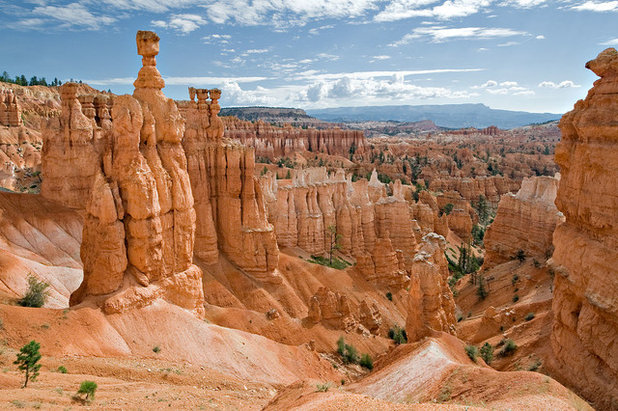
Luca Galuzzi
Humans have long been inspired by nature’s rocky handiwork. While hoodoos, like this breathtaking group in Utah’s Bryce Canyon, are a bit trickier to replicate in the home landscape — after all, eons of erosion are what create each and every hoodoo — mortals have come up with a bevy of creative contenders, the cairn in particular.
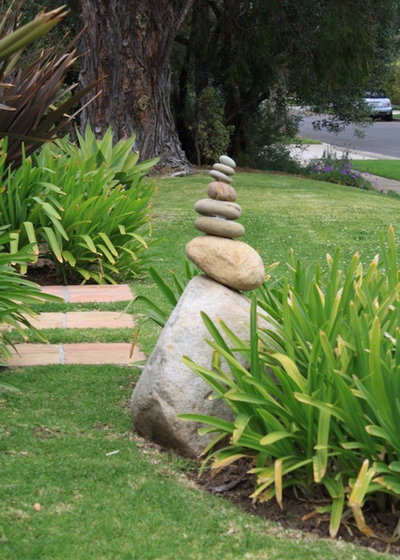
Dale Newman Landscape Architect
“Cairn” is the Gaelic word for a stack of stones left as a trailside marker for the next passerby, signifying a direction or perhaps the availability of food or water. Or these ancient structures can serve as a landmark, identifying a grave, a battlefield or a reverential space or vista. Cairns, like this one in Southern California, today often exemplify the meditative Zen practice of rock balancing.
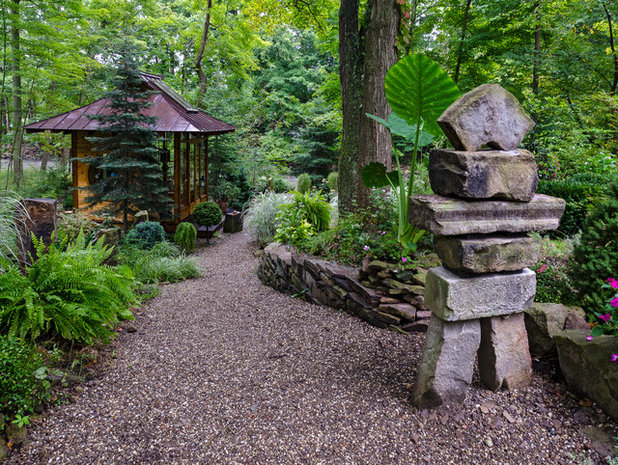
Miriam's River House Designs, LLC
This impressive stacked-stone figure on the path to a Japanese teahouse is based on the inukshuk, a landmark cairn long used by native Arctic peoples. But it does have hoodoo genes: The Inuit also created inukshuk-like markers with the design requirement that they always resemble figures.
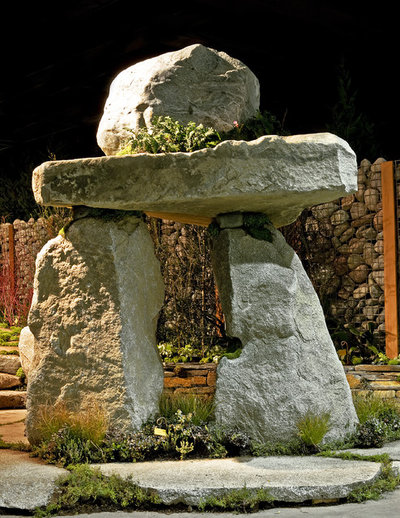
Exteriorscapes llc
Cairn, inukshuk and hoodoo elements can be seen in this sculpture by Seattle stonemason Cameron Scott, owner of Exteriorscapes. Its link to a hoodoo? Size. Scott’s stacked-stone wonder is 14 feet high; its local granite stones are held in place by rods measuring 2 inches in diameter.
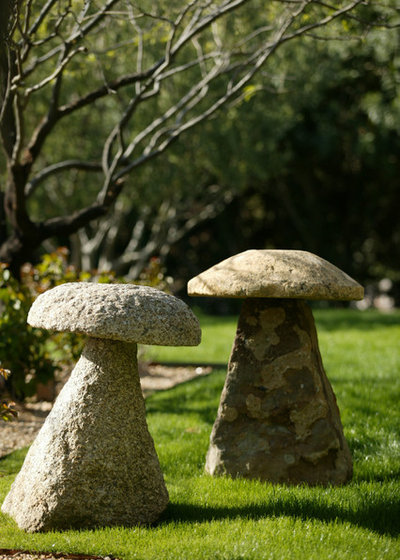
BERGHOFF DESIGN GROUP
At first glance these playful statues might seem wholly human in concept and design. But they’re not. Toadstool hoodoos are a major attraction at Grand Staircase-Escalante National Monument in southern Utah, the largest national monument in the USA and an empty-lands paradise of hoodoos, arches, rocky gulches and ancient stone canyons.
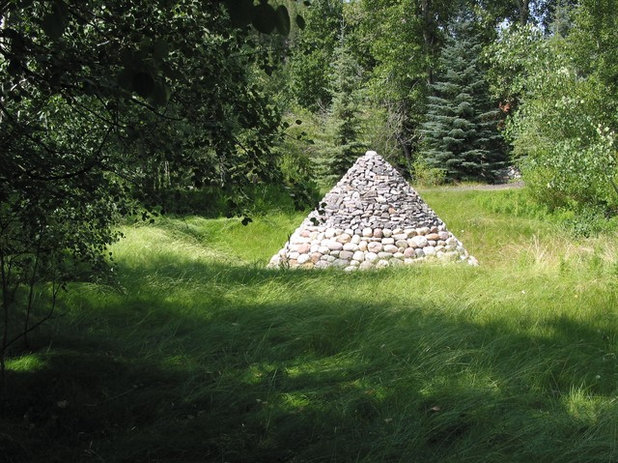
Randy Thueme Design Inc. - Landscape Architecture
Hoodoos are also called earth pyramids, though few are as smoothly pyramidal as those that humans construct. Or, in this case, as celebrated — the pyramid in this Idaho meadow is the handiwork of acclaimed sculptor Andy Goldsworthy, and a notable centerpiece of a redesigned landscape. The mission was to unite the human-made and the naturally occurring by softening the visual boundary between them.
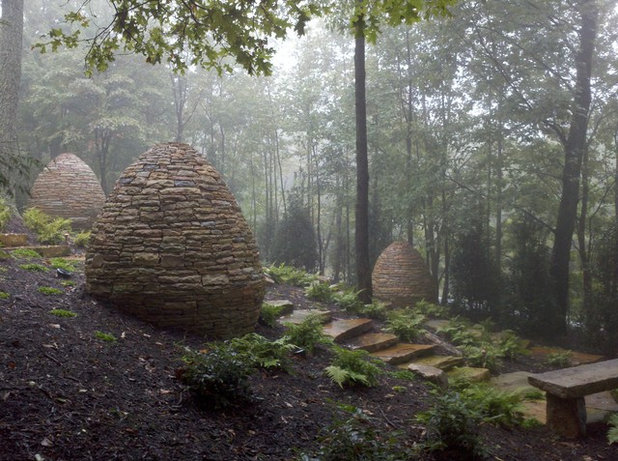
The Collins Group/JDP Design
These three egg-shaped, solid-stone cairns sit in a meditation garden that’s part of South Carolina’s Cliffs of Glassy. Given the location — a misty, mountainous forest — and the cairn’s Gaelic ancestry, it’s not a stretch to imagine that fairies or other mythical wood sprites might be lurking about.
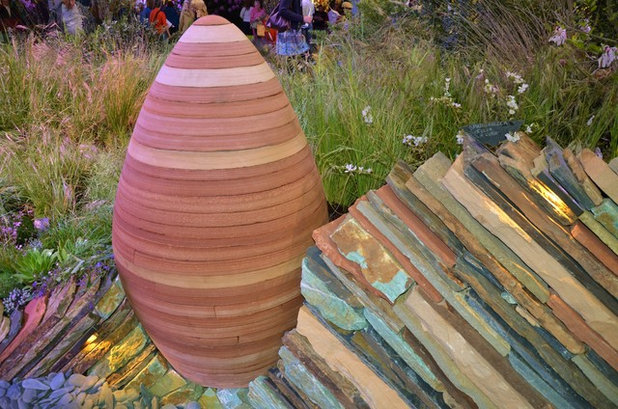
Mariposa Gardening & Design
Seed Pods
Stonehenge and the Parthenon, snail shells and nautilus shells, cauliflower and pineapples and, yes, eggs are examples, human-made and natural, of the golden ratio, a mathematical proportion that has long captivated scientists and artists.
The dimensions of the stone seedpods created by Berkeley, California, stonemason Andrea Hurd (one is shown here) follow the golden ratio. Each is made of stacked stone and stands tall and solid without the use of mortar or glue.
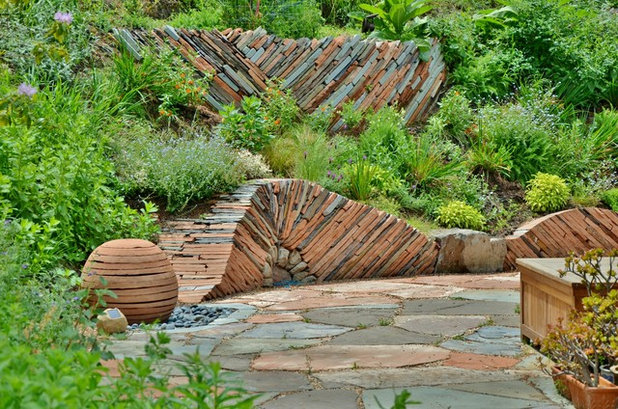
Mariposa Gardening & Design
The leaning flagstone wall is another Hurd specialty. Using a palette of pastel-colored stone — Arizona sandstone and New England bluestone among them — she creates stacked walls that follow the contour of the landscape while leaning at a 45-degree angle. No need to fear slippage. The walls are built “in such a way that if an earthquake hit, the stones would settle tighter together,” Hurd assures.
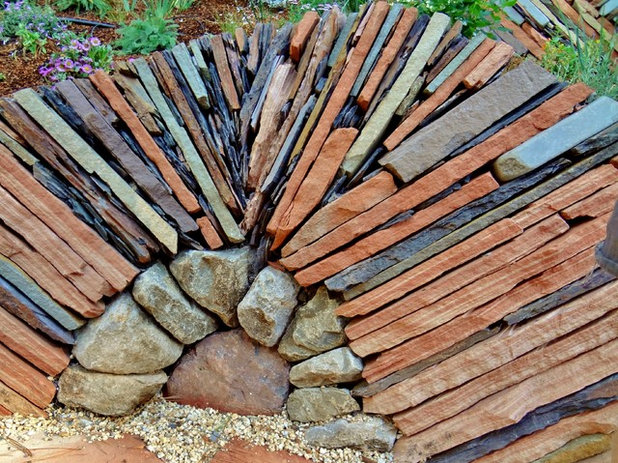
Mariposa Gardening & Design
Close up, the pastels and the wedged arrangement of Hurd’s garden wall offer an appropriate example of what hoodoo pieces look like before they become a hoodoo: the rim of a high-desert plateau. Hoodoos found in Bryce Canyon or in Arizona’s Painted Desert astound viewers not just for their crazy shapes but because, like rings in a tree trunk, they expose layers of geologic history — made of the rocks and the minerals that help define their shape and color.
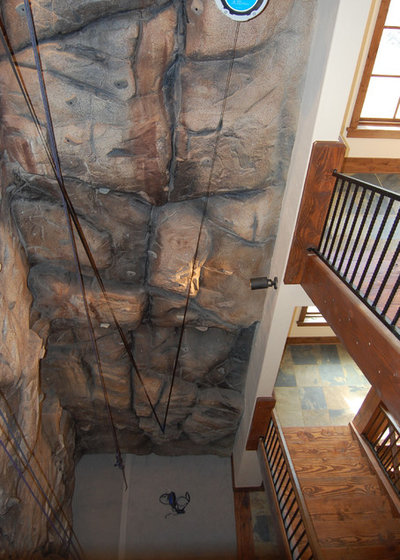
Great Divide Builders
Our attraction to stacked stones isn’t limited to viewing them or adding them to our outdoor landscapes. People bring them indoors as well for a myriad of uses, including recreation.
Not for the fainthearted, this wall of rocks was built for climbing. Located in an entryway next to the home’s main staircase, it can be scaled up or down. Either way it’s quite a trip — three stories’ worth.





